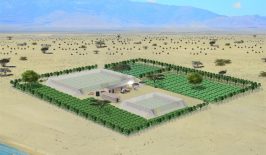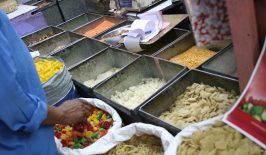Even when the will is there, very few city-dwellers have enough space at home to grow their own fruits and vegetables. Could a DIY flat-pack vertical garden offer a solution?
Harvesting fresh vegetables direct from the garden, picking apples straight from the tree, surrounded by the smell of fresh herbs… sounds like an idyllic way of gathering your groceries, right? For most people living in cities, it can be hard to find locally-grown, fresh produce, let alone be able pick it yourself from your own community garden. But more and more urban gardening projects are springing up around the world – from the Berlin supermarket that’s growing its own herbs, to the Parisians cultivating mushrooms in disused underground car parks.
A couple of years ago, Space10, IKEA’s innovation lab in Copenhagen, developed The Growroom, a spherical wooden orb designed to serve as an urban gardening hub, a place for communities to set up inner-city gardens and grow their own food. The first version of the design, presented at the art and architecture festival CHART in Copenhagen in 2016, was an immediate success. The company started to get lots of requests from all over the world, either to buy it or to present it at exhibitions. However, this was incompatible with The Growroom’s overarching objective: to provide an alternative to the global food model by helping to communities to produce food locally.
“We hope to see The Growroom appear in every city in the world. We believe that local food production represents a serious alternative to the global food model. Local food reduces food miles, our pressure on the environment, and educates our children of where food actually comes from,” explains Simon Capersen, Communications Director of Space 10 on the company’s website.
So the creators decided to make the build-it-yourself plans for the structure open source, meaning it’s available to anyone to use and build.
Building The Growroom at home
Designed with the help of Danish architects Sine Lindholm and Mads-Ulrik Husum, only one material is only needed to produce your own Growroom : plywood. 17 sheets of it, to be precise. Besides that you need two rubber hammers and a CNC milling machine (to cut the wood to size – something which is available to use in most major cities) The instructions – along with diagrams – are similar to the ones you’ll find with flat-pack IKEA furniture. The simplicity of the materials is designed to increase accessibility and affordability, while all of the pieces are designed to be slotted together easily and intuitively – meaning that theoretically it’s simple to put together, even for those with only basic construction skills.
The whole structure measures just 2.8 x 2.5 metres, but thanks to its overlapping layers, water and light can reach each level of the sphere, allowing vegetation optimum space to grow. The spherical shape also creates a natural shelter for visitors, a place not just to harvest food, but also take time out from the stress of city life. According to SPACE10, The Growroom “is designed to support our everyday sense of well-being in the cities by creating a small oasis or ‘pause’-architecture in our high paced societal scenery, and enables people to connect with nature as we smell and taste the abundance of herbs and plants.”
If you want to create your own Growoom you can download the files from GitHub right here.






